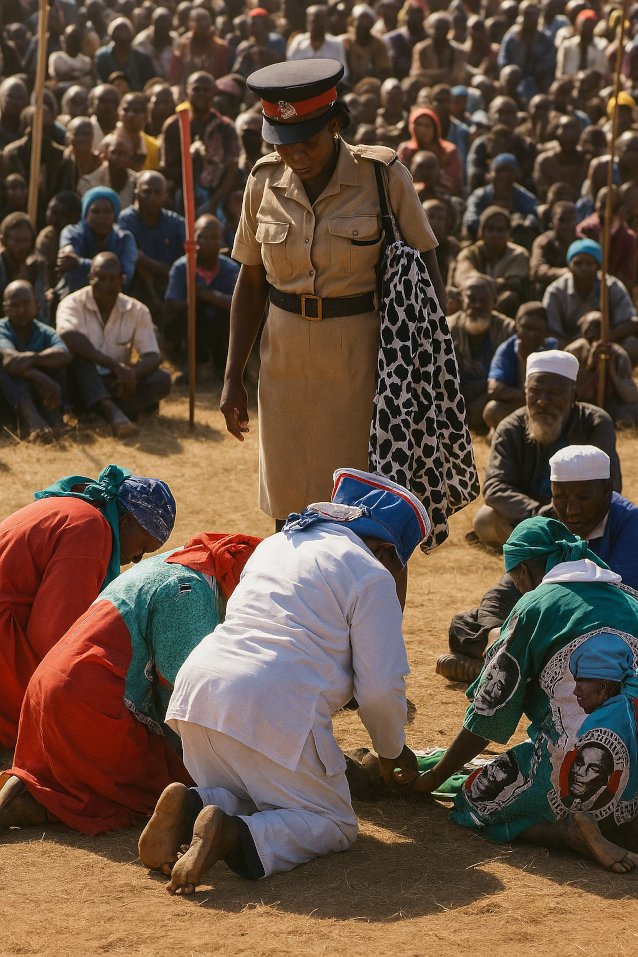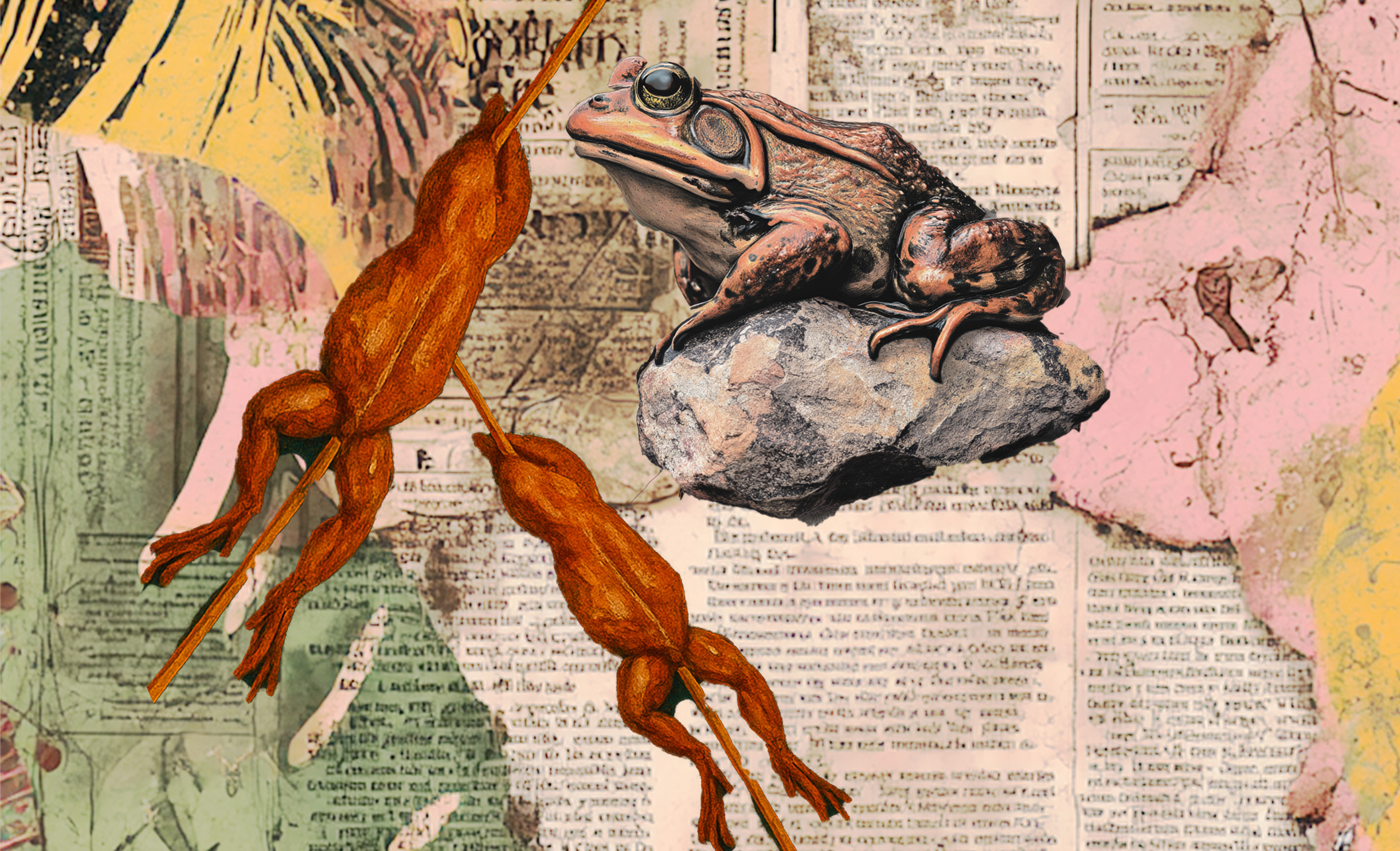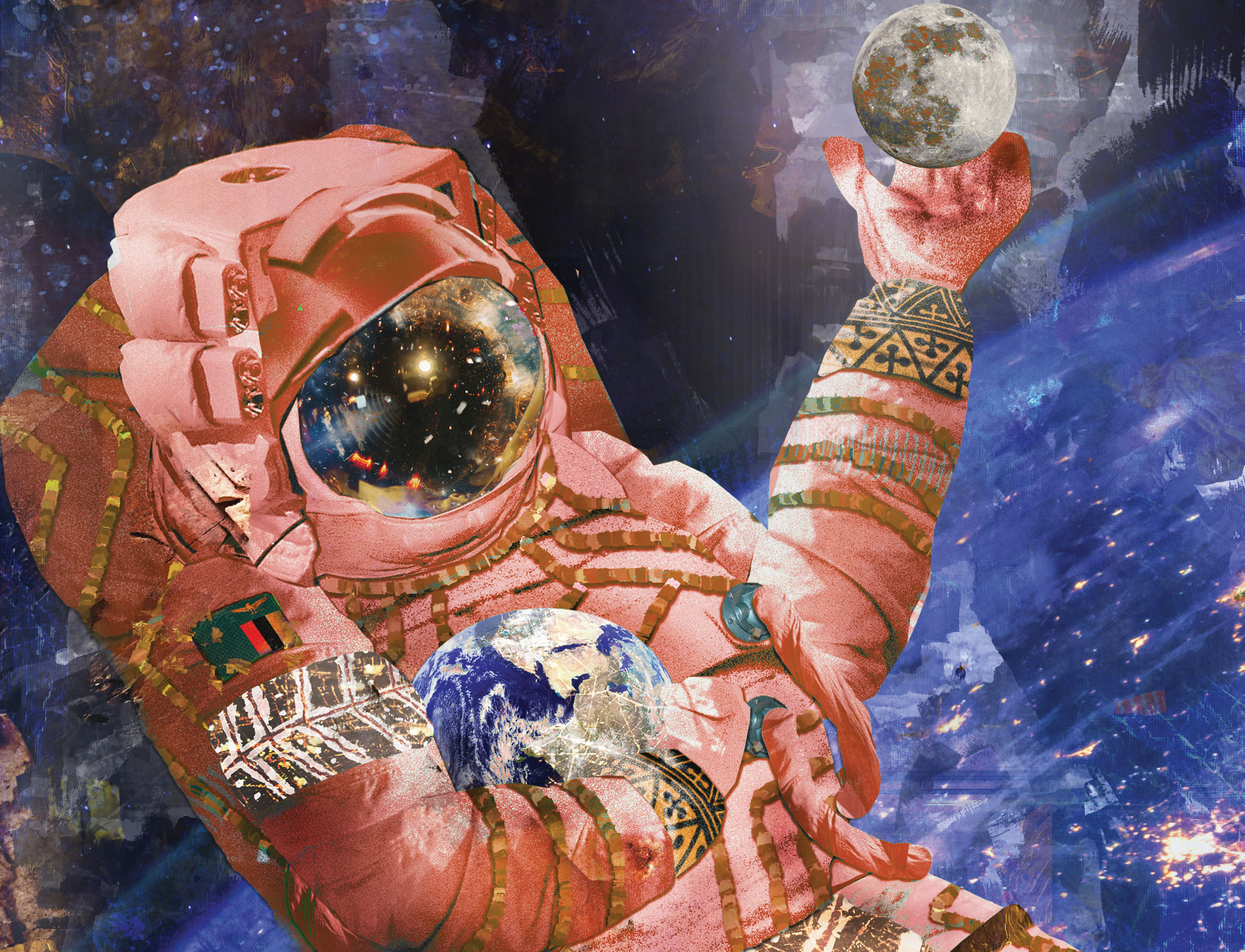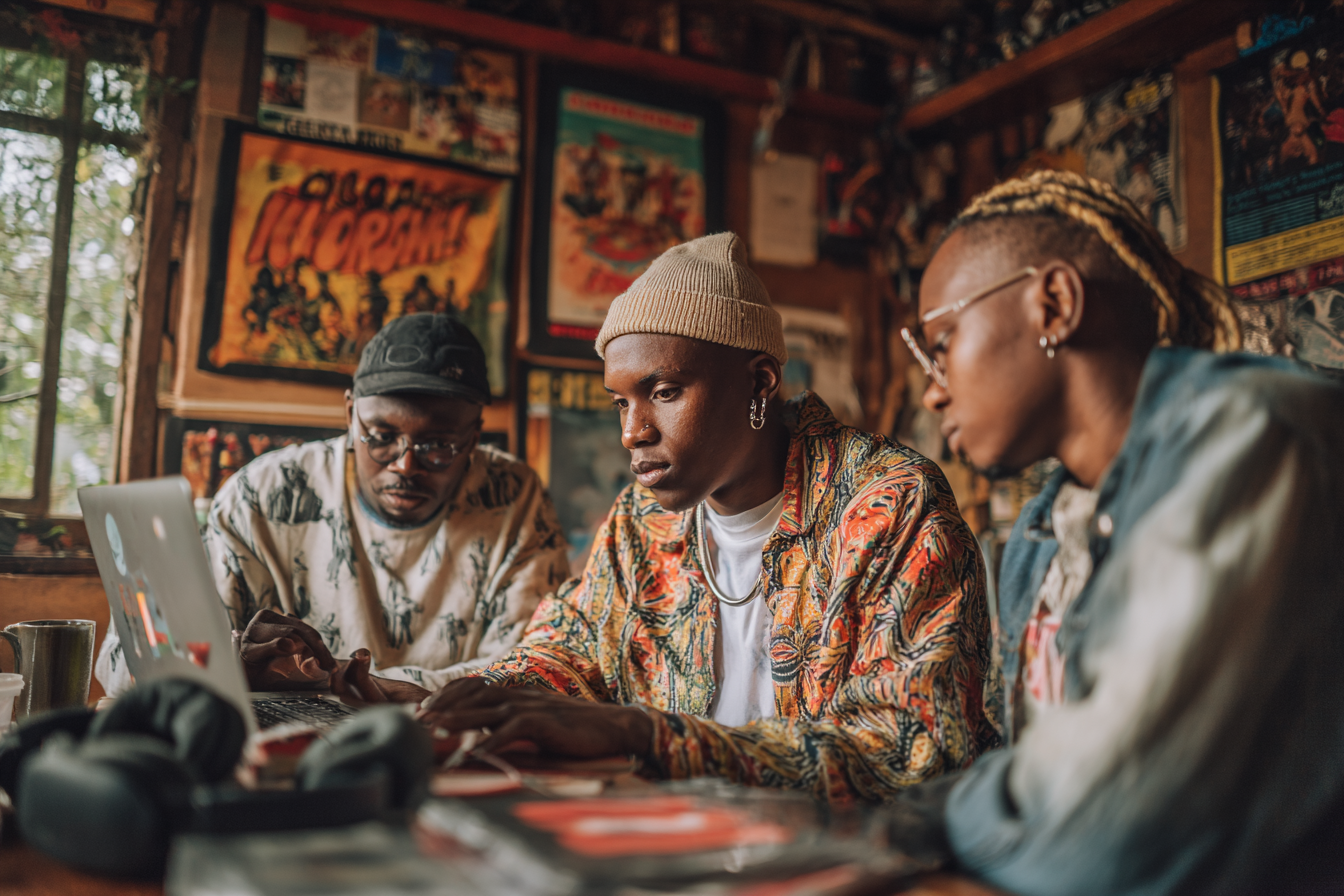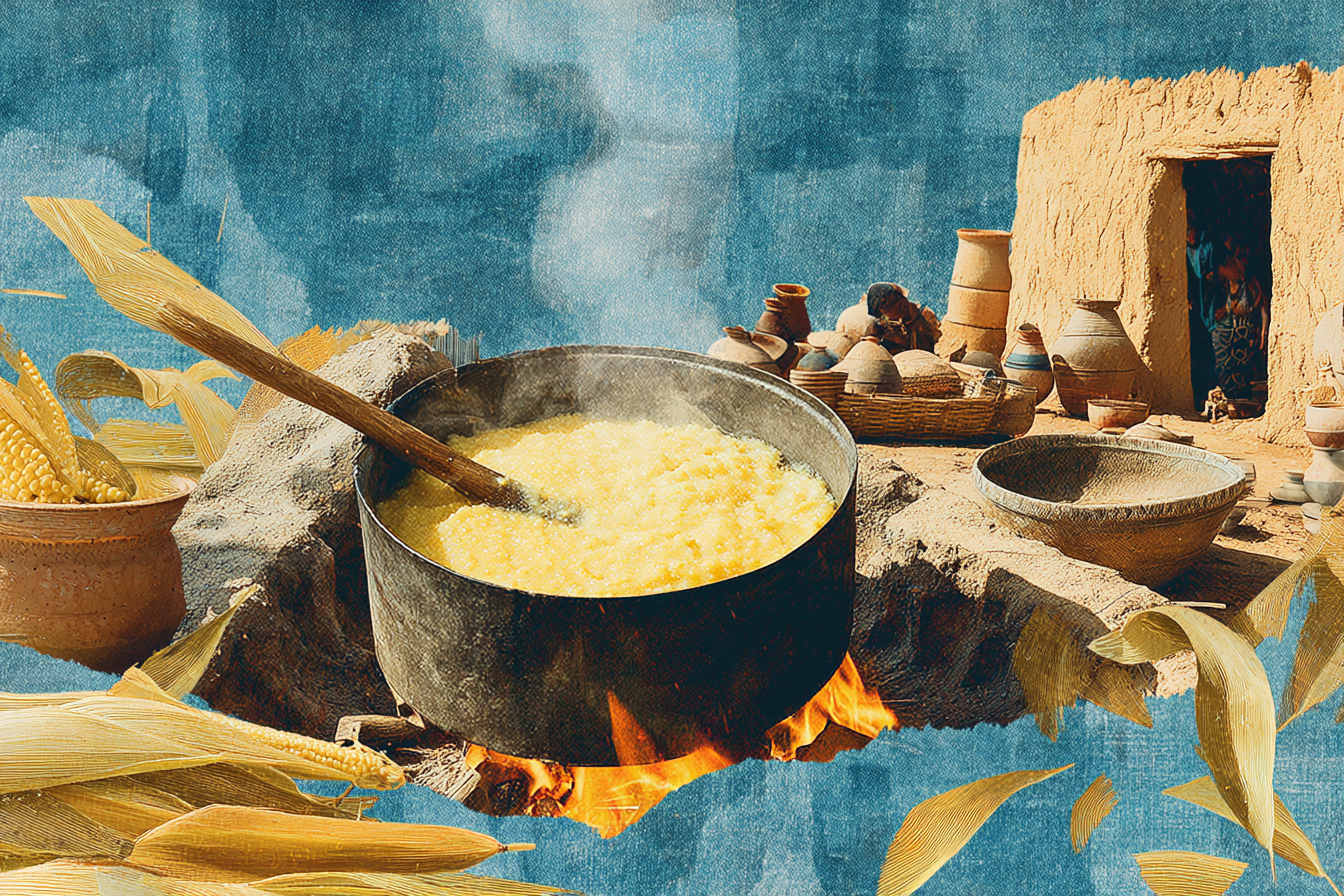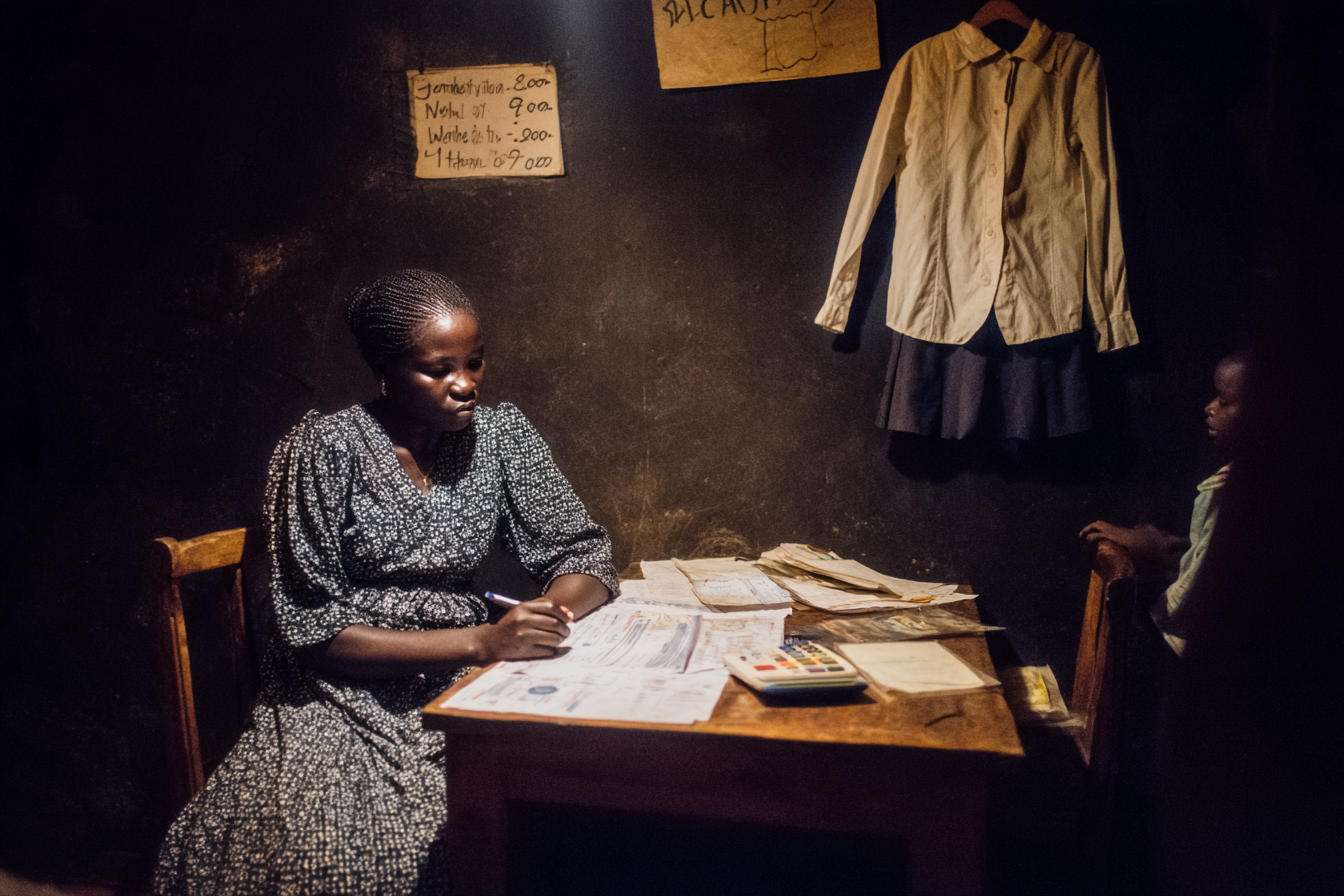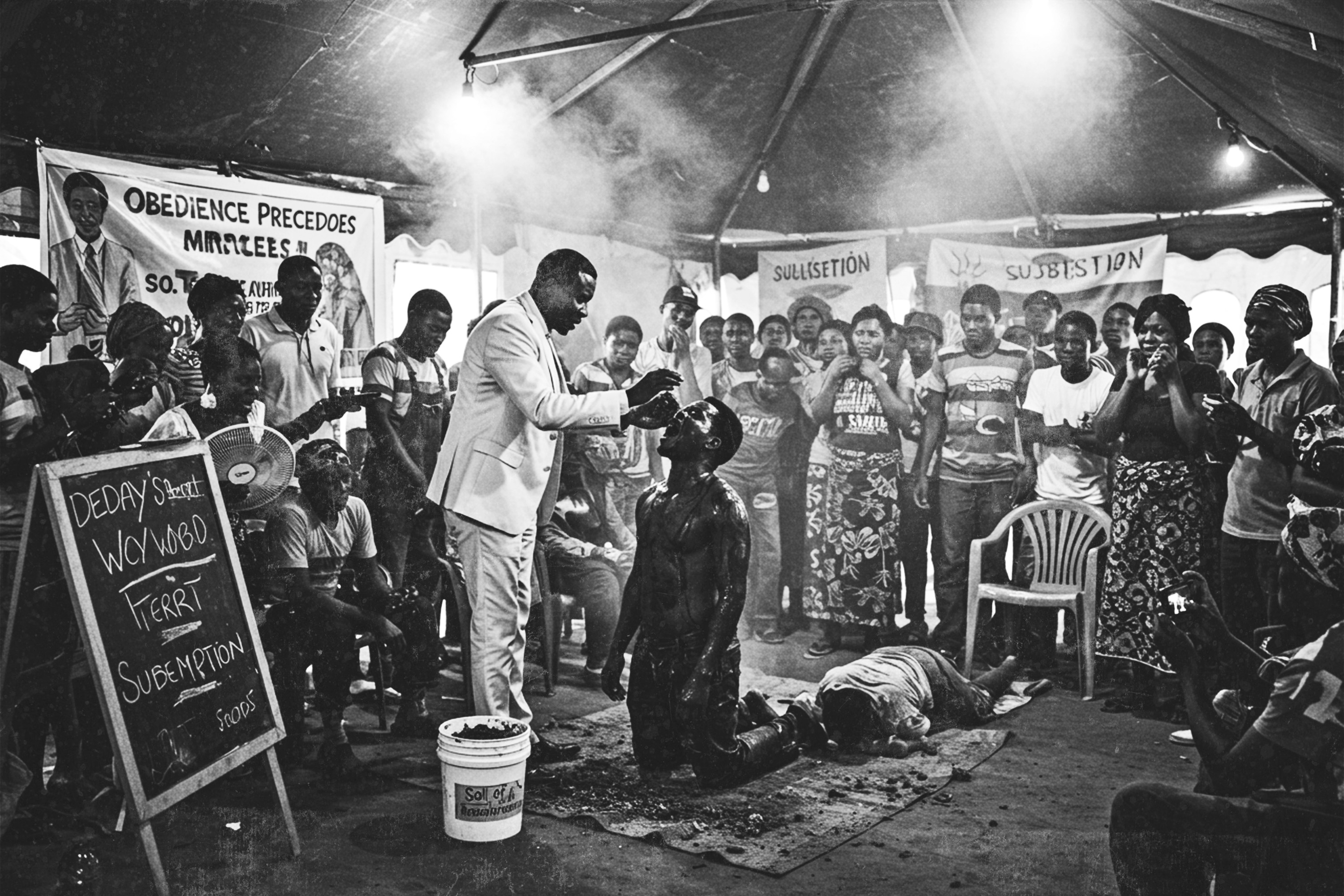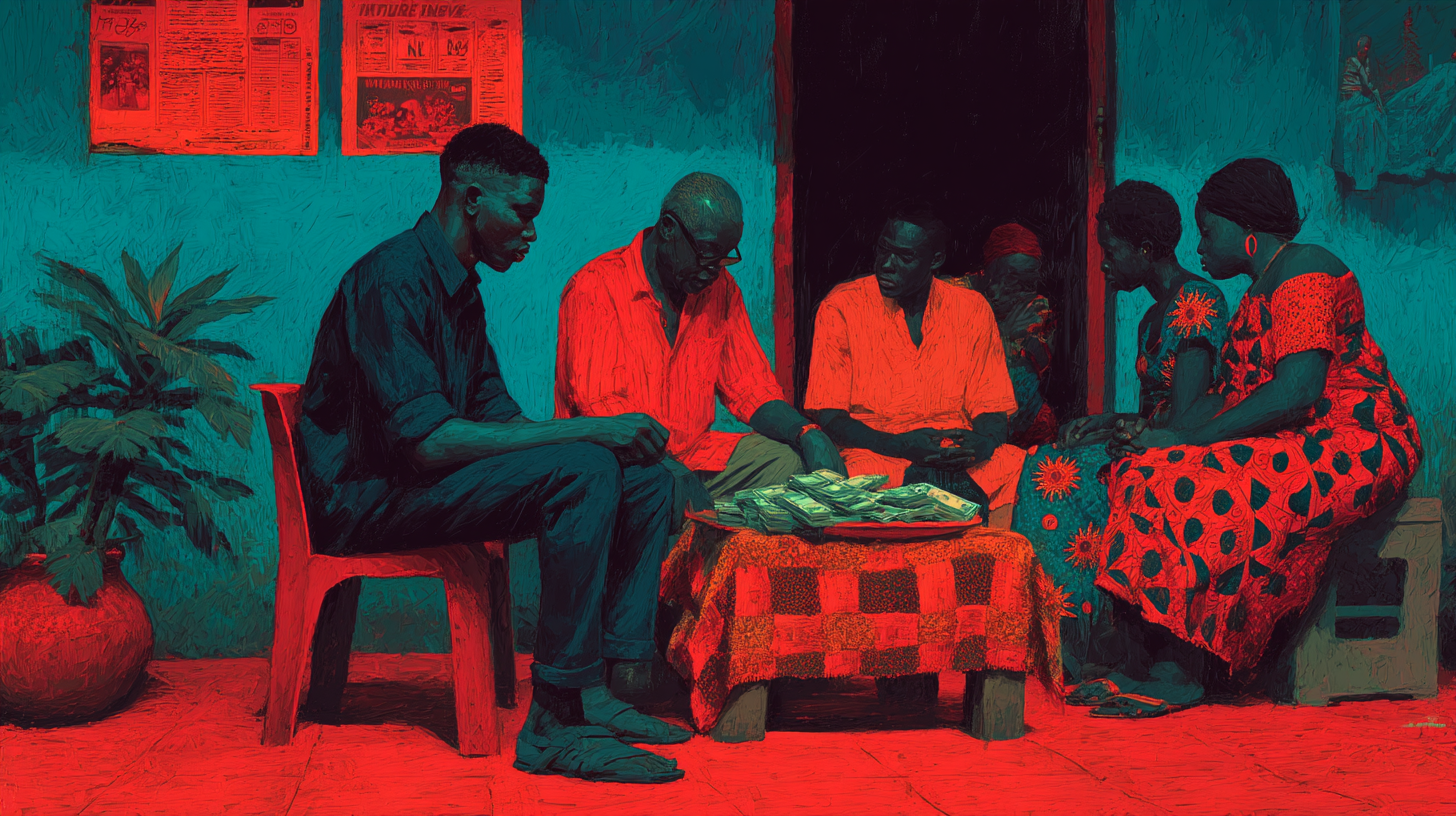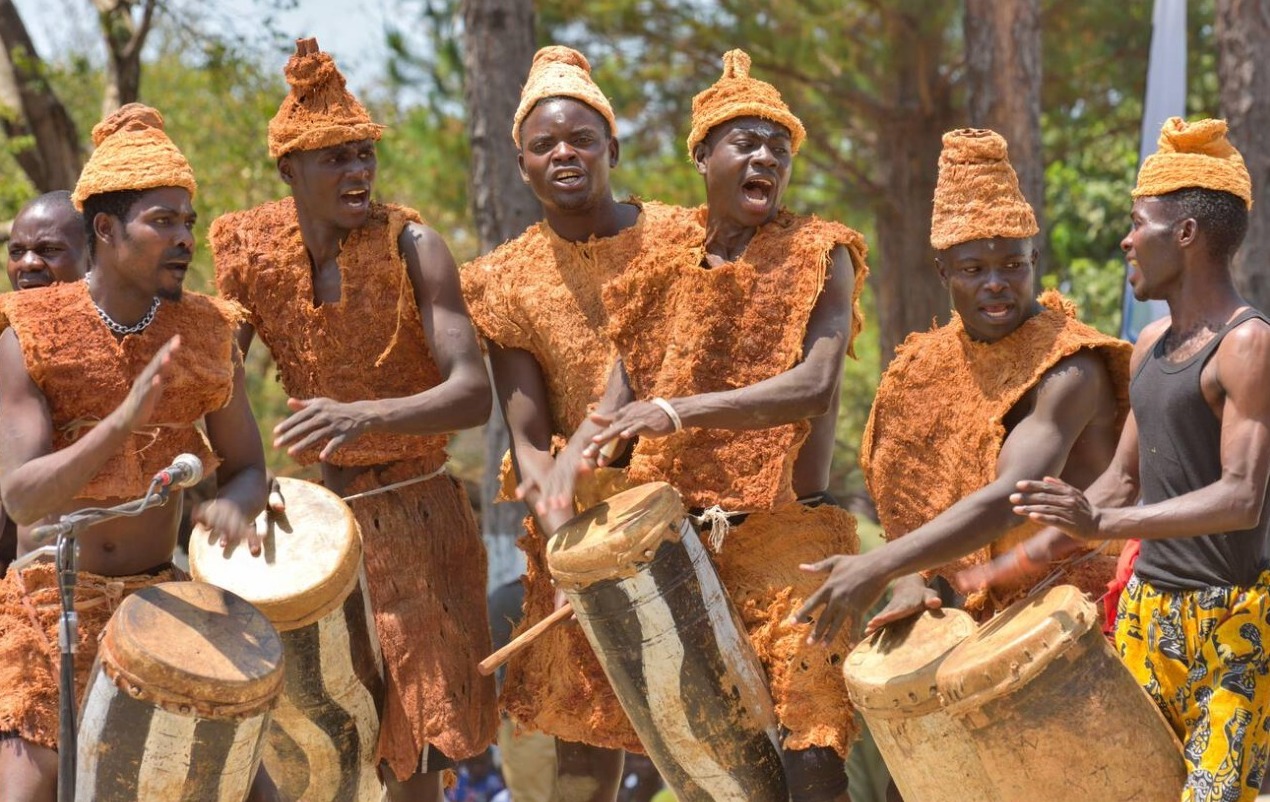The paramount chieftainess steps forward, her attire and feathered headgear commanding attention as the procession begins. The path she walks down has been stripped in shades of red, white and brown and her attendants follow diligently behind her. A distant rumble fills the air as gunshots ring out, a symbolic invocation of thunder. The Chakwela Makumbi has just begun, and you are about to witness the Soli people’s agricultural celebration.
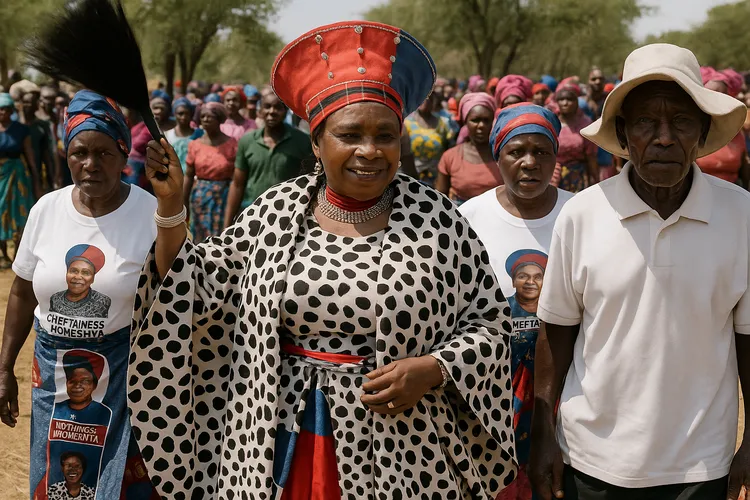
The Chakwela Makumbi, meaning “pulling down the clouds”, is the rainmaking ceremony held by the Soli people of Zambia. The ceremony, which consists of a collection of prayers dedicated to rain, fertile soil and a bountiful harvest, marks the beginning of the agricultural season. The celebrations are led by the Paramount Leader of the Soli people, Senior Chieftainess Nkomeshya Mukamambo II, and are a reflection of the deep ancestral heritage of the Soli.
Origins and Legend of Mukamambo I
The Soli originate from ‘Kola’ in present-day Congo, and migrated as part of the Bantu in the great Luba-Luda migrations. The origins of the rainmaking powers are linked to their 19th-century matriarch, Mukamambo I, who was known as a woman of great spiritual power. Oral history describes her as “swift as the wind”, with the power to shapeshift and evade enemies. More stories tell of elemental powers to control water and the changing of atmospheres, securing her status as the sacred rainmaker of her people.
Her successor, Mukamambo II, continues this legacy, with Chakwela Makumbi serving as communion with ancestors. As such, the ceremony is based in the belief of inherited spiritual powers and ancestral recognition.
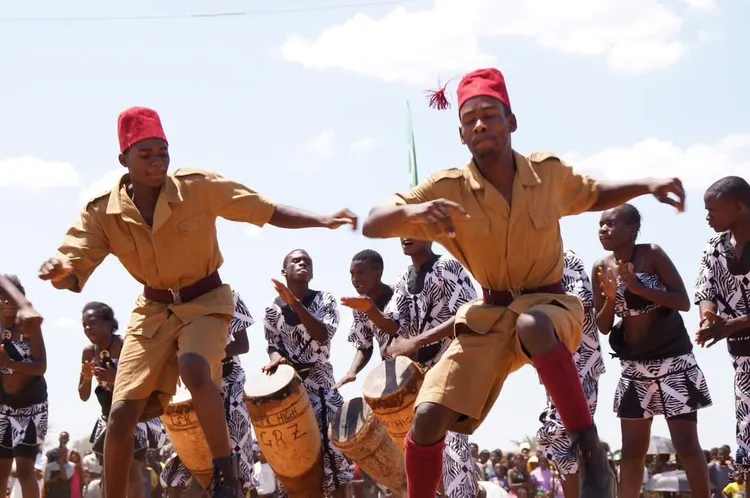
Cultural Significance and Attractions
The Soli believe their ancestors (mizimu) are revered spirits who intercede with the supreme God (Lesa), and they can secure ‘heaven’s blessings’ through the community, showing respect to the divine and ancestral powers by performing the ceremony.
The main highlight of the ceremony is the procession of the Chieftainess from her palace to the ceremonial area. The path she walks down during this is painted with white clay for purity, red for the blood and life of the people, and earthy brown for the land. No one is allowed to step onto the path before the Chieftainess does. She is followed by her attendants as musketeers fire gunshots into the air, meant to symbolise the sounds of thunder in the rain clouds.
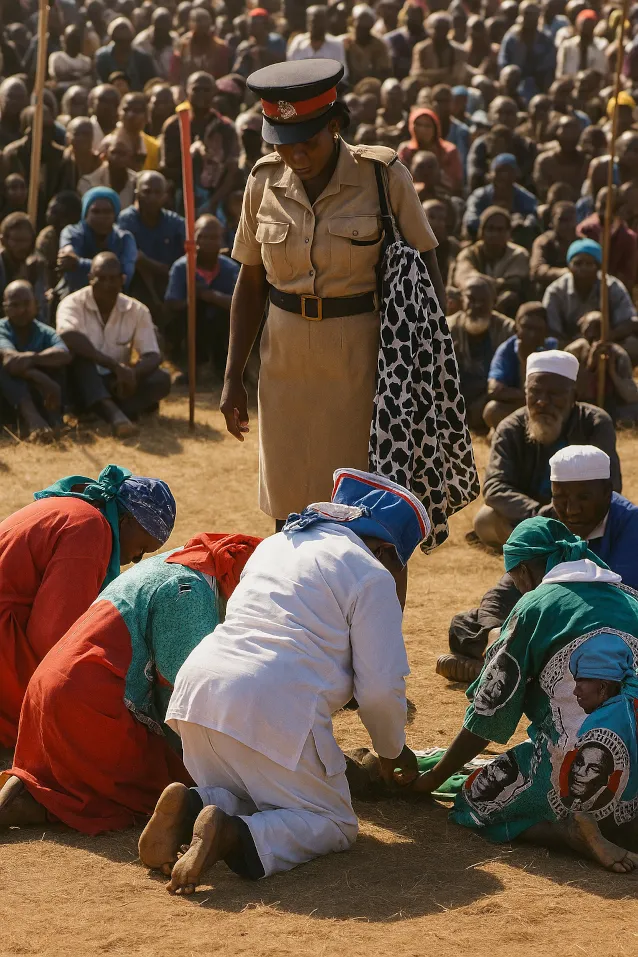
Each dance carries stories and praise messages, such as giving thanks to the ancestors, retellings of cultural history and praises of these dances are performed by the young females of the Soli people who have recently come of age. Their dance marks a transfer of heritage and transition into womanhood. Another performance is by the Soli Royal Dance Troupe, during which the women wear the royal colours of white or a mixture of white, green and blue, and the men wear animal skin as they carry shields and spears. Each dance carries stories and praise messages, such as giving thanks to the ancestors, retellings of cultural history and praises of the Chieftainess.
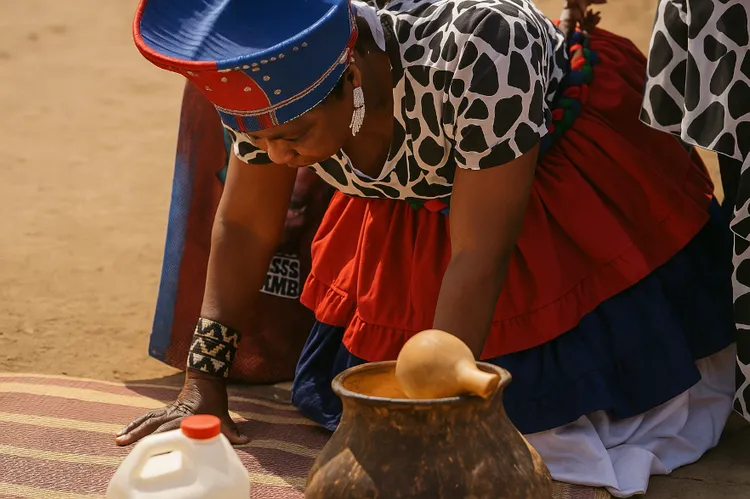
Today, Chakwela Makumbi has evolved into a major, well-organised event drawing outsiders, dignitaries and even international tourists, while still retaining its spiritual significance and serving as a showcase of the Soli culture and heritage.
When, Where and the What to
- The ceremony is held yearly at the end of the dry season which could range anywhere from late September to early November but is usually held in October.
- It is held in the Chongwe District of Lusaka Province, at the Makuyu Royal Palace grounds near Chongwe Town. Driving is the best option; an overnight stay in Chongwe ensures you experience the festivities fully.
- The festival activities usually last for a full day, with some gatherings taking part the day before or after, so make sure to plan accordingly to experience it all.
- Respect is paramount. Observe all rules; if unsure, ask security.
- Everyone joins the Chieftainess when she kneels down to pray or when rain songs are sung. It is crucial to treat these moments with reverence and join the rest of the crowd in silence.
- Food and beverage necessities are not a worry, as local beers and communal meals are prepared by the Soli women during the ceremony.
- If you’d like something different, stalls set up by the community are often around the area. In addition to food and drink, these stalls are also where you’d find traditional Soli crafts and materials to take home.
Chakwela Makumbi is a ceremony of profound cultural and spiritual significance and an opportunity to experience and learn about the different Zambian cultures in a profound and personal way.
